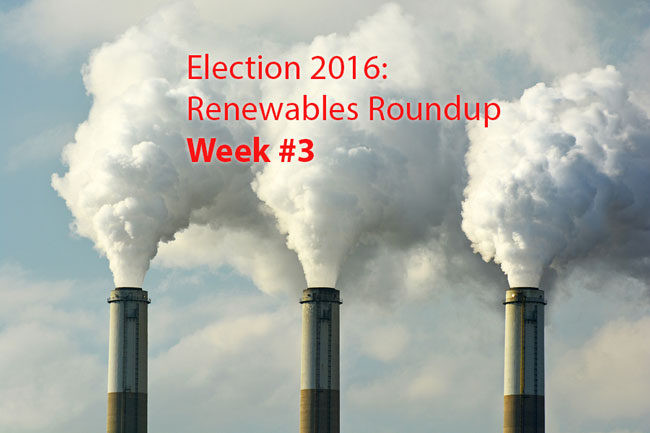
As the polling gap closes, climate and renewables are conspicuously absent from the mainstream debate.
Our election renewables roundup for week 3 sees the polling gap between the two major parties to be the width of a cigarette paper with Bouncing Billy Shorten closing the preferred prime minister margin.
The closeness of the campaign shows a single issue cuts across party and demographic lines, is popular amongst the majority of voters and may be the difference between winning, losing or a hung parliament.
That issue is is renewable energy. Australians have long signalled their support for a party that supports renewables and shows willingness to take action against climate change.
So where’s the debate from the major parties about renewable energy? Why isn’t it front and centre in our latest election campaign? We’ve had a National Press Club debate of sorts but the environment, climate change and renewable energy all seem well down the pecking order.
This absence is tackled by David Holmes, Senior Lecturer, Communications and Media Studies, Monash University, who argues (cogently) that it is baffling that environmental issues are so low on the order of the major parties’ priorities when the need for debate is so necessary.
And why shouldn’t renewable energy such as solar and wind not be at the centre of attention? With the constant mantra about jobs and growth, the renewables industry has shown it is a prime driver of employment throughout the world.
http://reneweconomy.com.au/2016/renewable-energy-employed-8-1-million-people-in-2015
Regional electorates will be among the first to benefit from the solar and storage boom. Something for the Nats to consider?
http://reneweconomy.com.au/2016/76209
Meanwhile, G7 countries have agreed to a timetable to end fossil fuel subsidies. Will this have an impact on the Australian election campaign?
Interestingly, the Coalition’s only apparent contribution to the debate over climate during the election campaign has been to continue the scare campaign over Labor’s carbon tax. Yet climate modelling released by Energetics, says the government’s own Direct Action policy will only work through massive taxpayer subsidies or (horror of horrors) as an emissions trading scheme.
However, Labor’s environment spokesman Mark Butler said the government has “no will” to reduce emissions.
But to be fair, it hasn’t been all neglect from the Coalition as Barnaby dons the hard hat to launch the White Rock Wind Farm near Glen Innes, NSW.
http://www.cleanenergycouncil.org.au/news/2016/May/white-rock-wind-farm-barnaby-joyce-goldwind.html
Last week also saw the announcement of the possible death knell for Hazelwood Power Station, one of the world’s most polluting power plants and long a target for supporters of clean energy.
Meanwhile, the Clean Energy Council has announced some political heavies who have agreed to address the Clean Energy Summit, The event is, unfortunately, after the election.
http://www.cleanenergycouncil.org.au/news/2016/May/aces-political-speakers.html
In week 3 we are at the ‘phoney war’ stage of the campaign. Most are saying people haven’t tuned into the party’s messages yet and won’t do so until the final couple of weeks. It will be interesting to see if clean energy and climate change are more of a priority then.

 RSS - Posts
RSS - Posts



If the energy retailers we made to pay responsible FIT rates of 2/3 to 3/4 of the retail price, then the public would install more solar panels on their properties. There would be no need for government subsidies.
Would love to see some thing like this put into place.